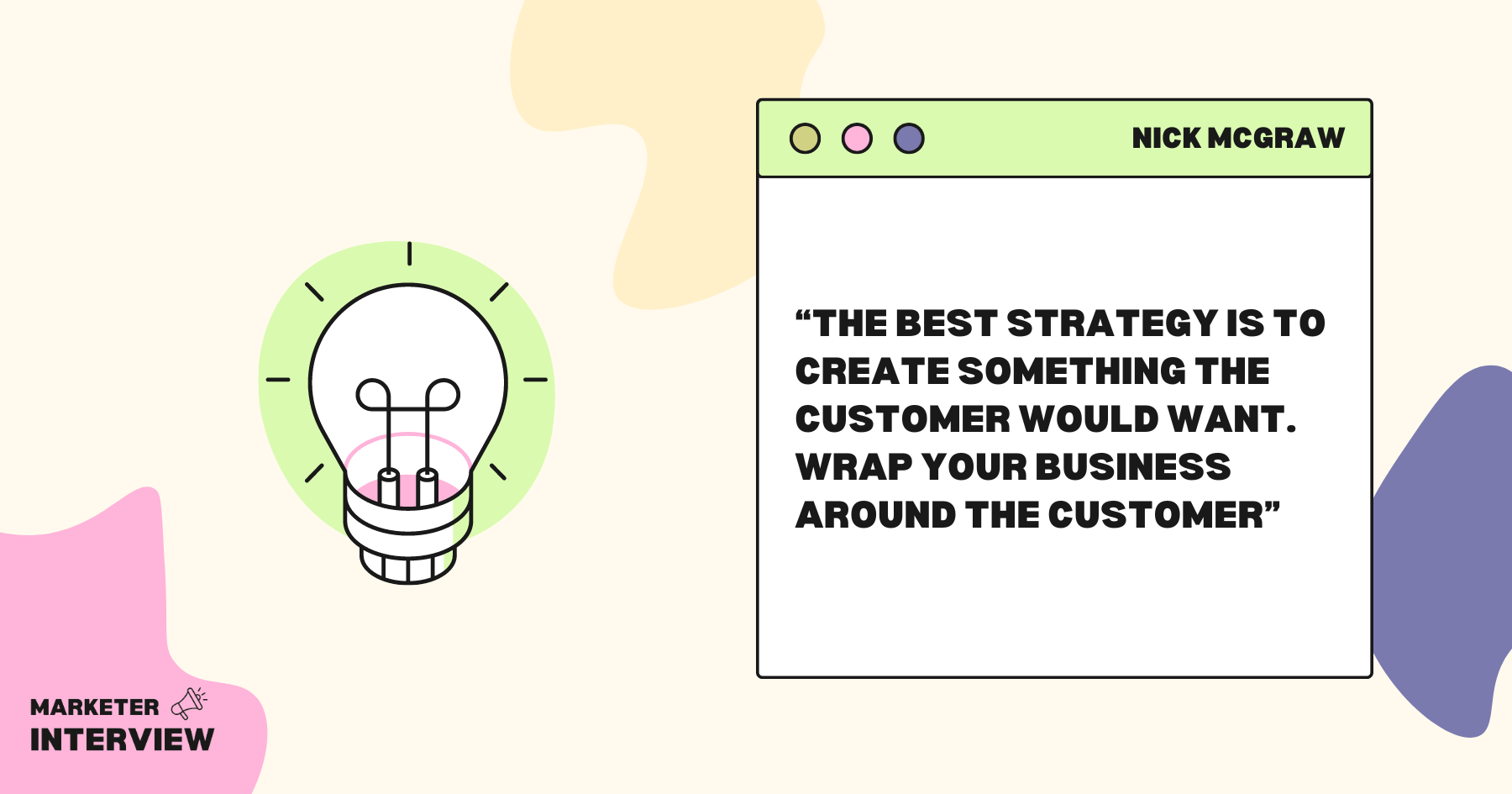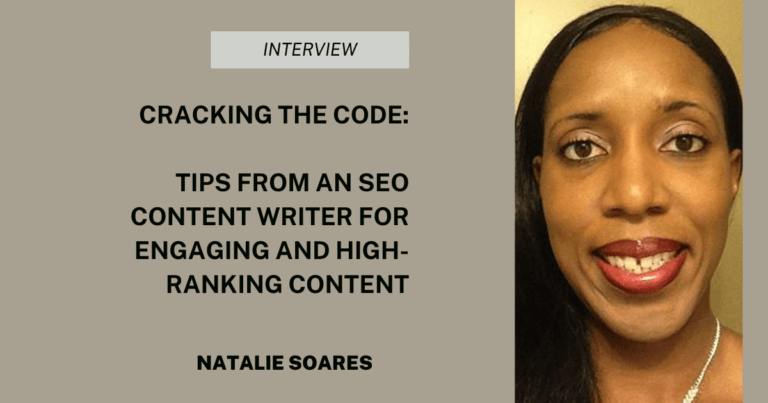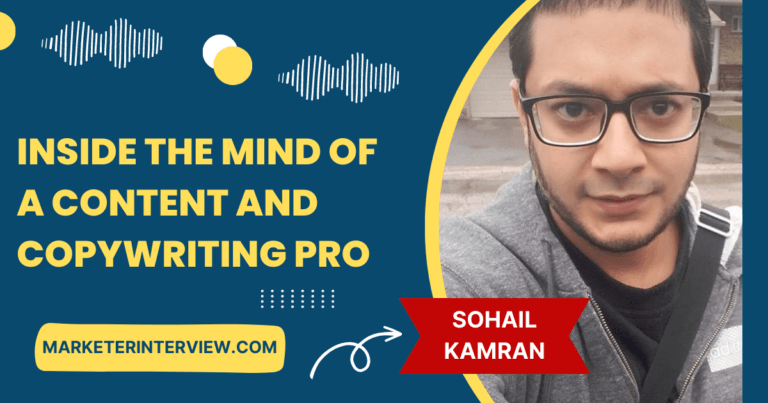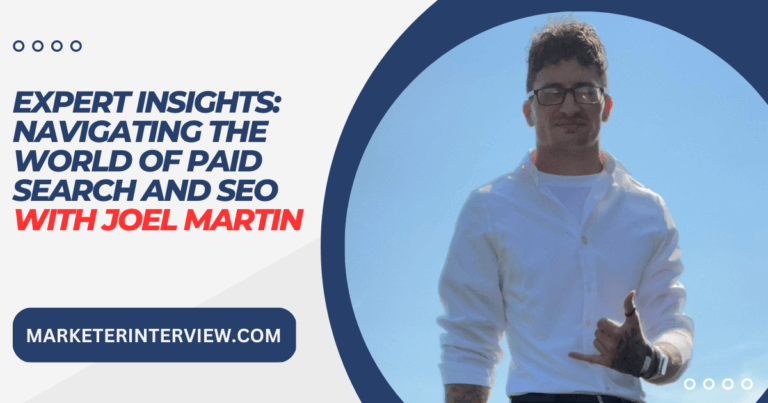Crafting Value: Unveiling the Art of Branding with Nick McGraw
Welcome to another captivating edition of Marketer Interview, where we delve into the minds of industry trailblazers.
Today, we have the privilege of sitting down with Nick McGraw, a visionary entrepreneur and brand designer who is reshaping the landscape of branding in the digital era.
From the spare bedroom of his apartment during a global pandemic, Nick founded McGrawesome with a genuine belief that businesses that invest in their branding are perceived to be more valuable and become the first choice for their customers.
Let’s unravel his insights into the world of branding, ranging from SEO to photography to copywriting.
Contents
- 1 Can you share your journey of transitioning into the branding field and becoming a prominent brand designer?
- 2 Your philosophy emphasizes entrepreneurs transforming into recognized and trusted brands. What pivotal moment inspired you to adopt this unique perspective?
- 3 Starting McGrawesome during a pandemic must have posed challenges. Could you elaborate on how you navigated those initial hurdles and built a thriving venture?
- 4 Branding encompasses a broad spectrum, from SEO to photography to copywriting. How do you approach this holistic process when developing a brand for your clients?
- 5 How do you ensure a brand’s consistency across various platforms and channels in the digital age, and what role does technology play in this endeavor?
- 6 Could you share a success story where your branding strategies significantly elevated a client’s business, incorporating elements such as SEO and photography?
- 7 Copywriting is a cornerstone of effective branding. What are your top strategies for crafting compelling brand narratives that resonate with the audience?
- 8 Photography plays a vital role in visual branding. How do you align photography choices with the essence of a brand, and what tips can you offer to entrepreneurs for impactful visual content?
- 9 SEO is crucial for online visibility. How do you integrate SEO seamlessly into the branding process, ensuring that a brand looks excellent and is discoverable?
- 10 In today’s rapidly changing digital landscape, what cutting-edge tools and software do you rely on to streamline your branding projects?
- 11 What trends do you foresee in the branding arena, and what advice would you give emerging entrepreneurs striving to build lasting, recognizable brands?
While I’ve been a graphic designer for over a decade, I only decided to specialize in branding a few years ago.
It started with just designing logos, but I realized as I presented my concepts to my clients I had to show them mockups in context. They needed to see their brand come to life across all media types – in print, screens, and merchandise.
I started following other great designers to see how they did it, and my skills improved because I wanted to be just like them. That led to an even deeper understanding of branding as not just a logo and colors. It’s so much more.
I became fascinated with how a brand is created from nothing, and I started seeing these tactics in the brands I love. Now, I help my clients create their brands and access the same power that the biggest brands in the world use.
Your philosophy emphasizes entrepreneurs transforming into recognized and trusted brands. What pivotal moment inspired you to adopt this unique perspective?
There was no real pivotal moment. It’s been a combination of things I’ve observed and experienced over many years.
People buy the things they know will work, and they put their trust in recognizable brands. The companies with the most market share are purchased more often than their competitors. When people see your logo, colors, or packaging, they have to know instantly what they will get. If they trust you, they’ll buy from you, not others. Branding can lead to more revenue.

I’m still building it, but it was a challenge back then.
When I started, I had no identity for the business. I remember being sent home from my job (which I could keep after a 2-week hiatus) and saying aloud, “I don’t know what winning looks like, but I’m not going to come out of this a loser. The only way I can lose is if I do nothing.” So, I decided to think seriously about my brand and potential business.
I networked aggressively, meeting as many people online as possible. I would spend 6 hours a day on IG alone, just DM’ing people and talking and making connections. That’s when I met my business coach. Having his support and building a plan with me was huge, and I’d have no business without him.”
Branding encompasses a broad spectrum, from SEO to photography to copywriting. How do you approach this holistic process when developing a brand for your clients?
It starts with discovery and getting to know them. You can’t recommend or diagnose anything without understanding their history and future goals.
Some businesses don’t need a new logo. It’s fine the way it is, and creating a new one won’t move their business forward. I don’t just apply the exact same solutions to every client. It’s a deep dive into their business, ideal customer, and values.
I have a process that I stick to in discovering their needs. I recommend the next steps on the back of that discovery. Sometimes, it’s just a home page rewrite with clear calls to action. In other cases, it’s the entire logo, branding, and website trifecta. Everyone is different; like a doctor, it’s my job to understand and prescribe solutions.
How do you ensure a brand’s consistency across various platforms and channels in the digital age, and what role does technology play in this endeavor?
It’s easy in the beginning. I can set the standards for visuals, banners, posts, website graphics, merchandise, and printed materials. But as a brand grows and evolves, more people might be involved, and rules aren’t as adhered to.
That’s why I develop brand guidelines for each client. A brand bible or blueprint for them to stick to. So they can put it into the hands of anyone in the future and say, “Make it look like this.” It sort of future-proofs the brand.
These things help everybody, but they help personal brands.
Branded photography is a super-weapon when it comes to making connections with visitors to your site or anyone who interacts with your social media. My client Deb has had tremendous results on her LinkedIn with the branding we developed for her. I encouraged her to hire a local photographer, and their work elevated the website. The photos were the foundation for everything else.
Copywriting is a cornerstone of effective branding. What are your top strategies for crafting compelling brand narratives that resonate with the audience?
Having an incredible offer is critical.
If you can hook people in with that, that’s half the battle. After that, having a solid call to action is essential. Something straightforward and easy to do. Don’t make people jump through hoops or overthink. They’ll bounce.
As for a brand narrative, that’s not just limited to copy. It’s in the images, the font selections, the tone of voice, the colors – everything. The best strategy is to create something the customer would want. Wrap your business around the customer. That’s the best narrative.

Photography plays a vital role in visual branding. How do you align photography choices with the essence of a brand, and what tips can you offer to entrepreneurs for impactful visual content?
One of the first visual phases of a brand build is mood board creation.
I use Pinterest to gather various visual elements, from logos to fonts, photos, color swatches, graphics, ads, and everything else. Photography is part of this, and when combined with everything else, we create a visual language and get a feel for the brand. It’s also pretty organic and fluid at this stage, as we can add or delete Pins as we see fit. I also tend to use high-quality, artist-made websites for references, like Unsplash.
SEO is crucial for online visibility. How do you integrate SEO seamlessly into the branding process, ensuring that a brand looks excellent and is discoverable?
What many people don’t understand about SEO is that there are 2 types: on-page and off-page SEO.
On-page SEO helps with that discoverability, and this comes from doing extensive research on user habits and building powerful keyword lists that we want the brand to rank for. This starts immediately after we do the discovery, and it’s an integral part of the strategy.
We then use the findings to build a sitemap (if the project calls for a website), and our copywriter uses our keywords to write beautiful copy for the pages. But SEO can be influenced by so much more than just the words on your website: blog posts, content, podcasts, and getting your brand out there will all contribute toward your brand awareness.
In today’s rapidly changing digital landscape, what cutting-edge tools and software do you rely on to streamline your branding projects?
Designers need to embrace AI. IT WILL NOT REPLACE YOU. If anything, it makes me better.
I create presentations with Midjourney all the time, and I make no apologies about using ChatGPT. They help you think more laterally, especially if I’m too literal.
There are other tools, like Slack for my team communication, Trello for keeping projects on pace, Honeybook for invoicing, and many mockup sites I use.”
What trends do you foresee in the branding arena, and what advice would you give emerging entrepreneurs striving to build lasting, recognizable brands?
I think brands will keep teaming up like you already see them doing. Prime energy drink is one of the most influential brands to emerge recently, and they have partnerships with Arsenal and Bayern Munich. Personal brands partner up with products all the time in affiliate marketing. If you can find a company with similar values to yours, but you complement each other’s services, that can be very fruitful for both parties.
In terms of ongoing brand value and longevity, I always remind my clients to stay true to their vision: Why did you start this business? Because you saw a need in the world, right? You saw or experienced pain or a problem and wanted to solve it. Never give up on that.
Another way of saying that is, “Remember why you started.” That’s your north star. That’s how you build a lasting brand. Stay true to your values, and the customers will come.






